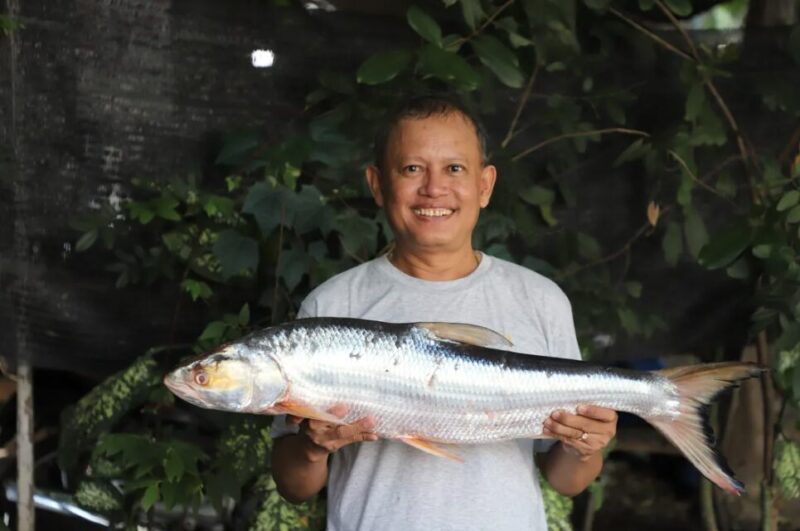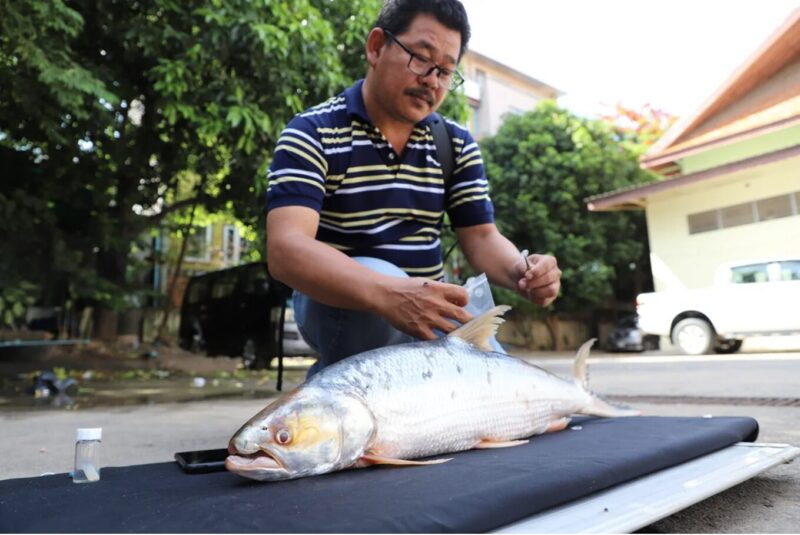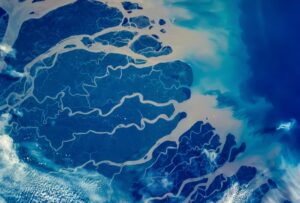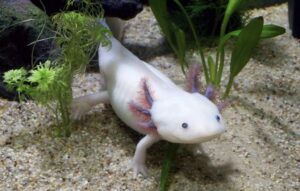The Mekong River’s giant salmon carp is so elusive that scientists call it the “Mekong ghost.” With only 30 recorded sightings since 1991 and none since 2005, many assumed the Cambodian behemoth was extinct. Now, several new sightings confirm that the species is still alive.
The huge carp can grow 1.2 meters long and weigh 30kg. In 2020, a fisherman in Cambodia caught a ginormous fish but did not know what it was. Rumors that the Mekong ghost still lurked in the river started to form.
When researchers analyzed photos of the fish, it did look like a Mekong ghost — same mouth shape, same silver back, a patch of yellow over its eye, and a tell-tale protrusion on its jaw.
Sadly, the fisherman sold it before they could examine the actual fish. Most scientists felt the photo was not enough proof.
Then in 2023, opportunity struck again. This time, Cambodian fishermen caught two similar fish in the Mekong River.
“Even though the fishermen…hadn’t seen the fish before, they knew they had something remarkable, unusual. They knew that it was worth contacting us,” Zeb Hogan, a biologist with the Cambodian fisheries department, told CNN.

Photo: Chhut Chheana
A ghost no more
After buying the fish, an international research team examined them and concluded that they were, indeed, the Mekong giant salmon carp. That’s three fish after an absence of nearly two decades.
“[This] is a reason for hope, not just for this species but for the entire Mekong ecosystem,” said Bunyeth Chan, lead author of the study.
They are pushing to protect the Mekong River not just for this one rare carp but for the waterway’s 1,100 other fish species. Many are under threat from climate change, overfishing, sand mining, and the more than 700 dams on the river.

Photo: Chhut Chheana
The Mekong River stretches 4,350km from the Tibetan Plateau through China, Myanmar, Laos, Thailand, Cambodia, and Vietnam. All three Mekong ghosts turned up inside the Stung Treng Province, which sits much farther south than their known range. Researchers think they might have migrated there from Laos or Thailand.
Now the hunt is on to find more of the rare fish. Teams are heading to Laos, Vietnam, and Cambodia, and environmental DNA surveys will be carried out on water samples from different sites along the river. Researchers want to figure out how many still exist and where they can be found. It’s possible that they still exist in all three countries.






